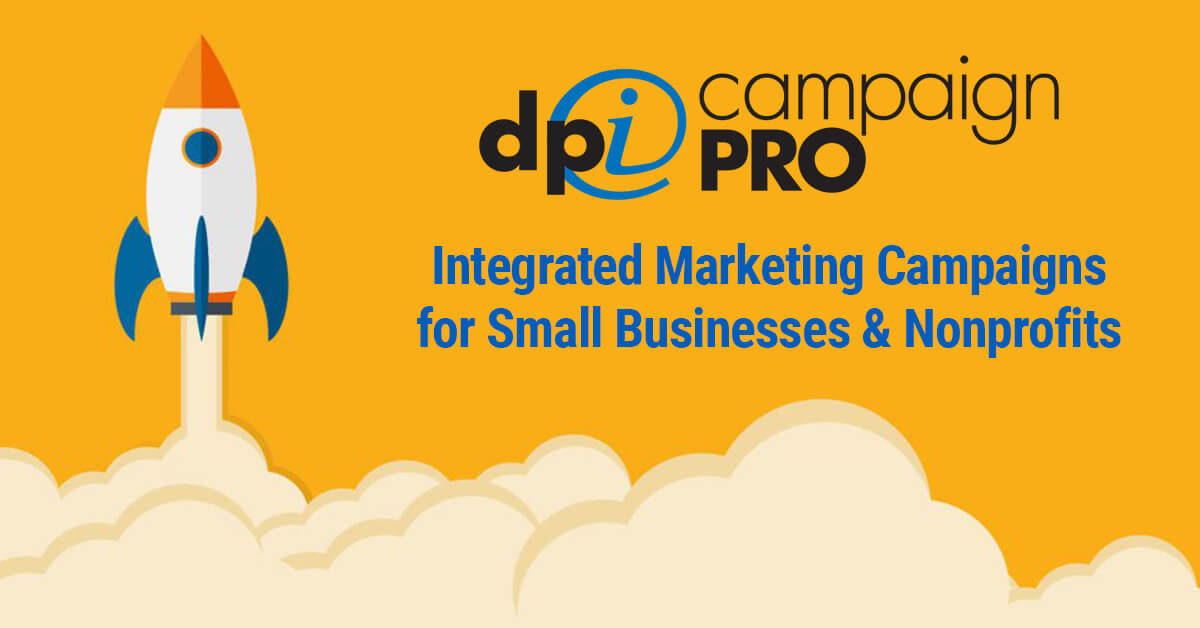NONPROFIT: How To Create & Execute a Successful Fundraiser
For many nonprofits, fundraising is the name of the game – finding donors, soliciting donations, educating members and donors about initiatives and so on. And, while fundraising may be an ongoing focus of the organization, they still miss the mark when it comes to planning a successful fundraiser. There are several steps and stages to creating and executing a successful fundraiser; and it all starts with planning ahead.
PLANNING A SUCCESSFUL FUNDRAISER
The most successful fundraisers are those that are planned months in advance. Being strategic about the timing and method you use to ask for donations also increases your success. For example, some nonprofits explicitly fundraise in the last two months of the calendar year – why? People are more apt to give during the season of giving. If donors are already in that frame of mind, why not focus your fundraiser marketing on that time of year (and leading up to it)? Regardless of what time of year you choose for your fundraiser(s) – see what I did there – some forethought needs to be had with regard to your organization’s plan to get the word out.
HOW FAR AHEAD YOU SHOULD YOU PLAN?
A good rule of thumb is to plan no less than a couple months out from your target fundraiser date. For instance, if you’re shooting for a Giving Tuesday (the Tuesday following Thanksgiving), start your marketing in October. Ideally, you should plan your fundraising for the year (yes, the year) a year in advance so that you don’t have any surprise marketing expenses or try to put together a marketing campaign last minute. In my experience, last minute marketing generally has helps very little (unless you sink some money into exposure).
Most organizations already have a fundraising plan for the year and adhere to it. If fundraising isn’t a huge focus on your nonprofit or if you’re a new nonprofit that hasn’t done a lot of fundraising previously, start by planning out your year in advance.

WHAT KIND OF FUNDRAISER SHOULD YOU HAVE?
In the age of COVID, fundraising – specifically in-person fundraising – has become infinitely more challenging. In the last year, many in-person fundraisers and fundraising events have had to cancel or be postponed, or moved to an online event or live stream. The kind of event you choose will have a bearing on the amount of marketing and other fundraising planning that you’ll have to do.
For instance, I am involved with a murder mystery dinner theatre that raises funds for charity each year – it’s usually one of many fundraising events for the charity that occur throughout the year, but it involves a lot of upfront work to plan and ensure the event goes off without a hitch: script writing, rehearsals, ticket sales, donations of food and beverages for the show, lining up the venue, catering and staging. There’s a lot that goes into running an in-person event to ensure that it is a successful fundraiser.
On the other hand, if you are soliciting for donations based on the needs of your nonprofit or the charity you support without an in-person event or holding an online event instead, there’s far less that needs to be determined for planning purposes. It’s important to know what type of fundraiser you’re going to have: in-person event, online event, product sale, donation solicitation, etc. To do this, you’ll need to know what your nonprofit’s goal is.
Goals are required for everything – if you don’t know where you’re going, you won’t know how to get there. How will you measure the success of your fundraiser? How will you know once you’ve achieved it? To determine the type of fundraiser that will work best to achieve your goal, you need to consider your nonprofit’s resources and capabilities. What type of fundraiser will yield the most funds with the least effort/resources?
HOW WILL YOU KNOW IF YOUR FUNDRAISER IS A SUCCESS?
Having a goal to measure the success of your fundraiser against is key and the only way you’ll know if you’ve achieved success. Knowing how much you want to raise will also tell you, in addition to what kind of fundraise to have, HOW MANY you’ll need to have to achieve your goal. For instance, if your goal is $10,000 for your fundraiser, you’ll want to consider how easily you can generate that much in donations. Will it be an event? How about a donation solicitation mailing? What about a combination of both?
Breaking a single fundraiser into multiple fundraisers can help yield better results and potentially provide opportunities for even more donations. Having a goal helps you determine how much and what kind of fundraisers will be successful for you nonprofit. Once you know what kind of fundraiser you’ll have and have a goal for your fundraiser, it’s time to start getting the word out.
MARKETING FOR A SUCCESSFUL FUNDRAISER
In my experience, most nonprofits like to take advantage of as many free or inexpensive marketing tools as is humanly possible. This includes free tools like MailChimp, social media, blogs and traditional marketing (flyers, community boards, etc.) However, you might also consider digital marketing programs like DPi Campaign Pro NonProfit, a digital marketing program that is geared for nonprofits to assist with marketing and online fundraising using Salsa. Salsa is a CRM for nonprofits that helps with donor management, fundraising and marketing automation.

HOW TO START MARKETING YOUR FUNDRAISER
The first thing you’ll want to do is inform your followers – social media, donors, friends, etc. of your upcoming fundraiser. Don’t hit them up for donations immediately; if your fundraiser happens on a certain date, or if the campaign has a particular start date, tell them what that is and to save the date. Save any solicitations for donations (unless you’re soliciting for donations of products at an event like we do for food and beverages for our dinner theatre) for closer to the start of the fundraiser. Use a multichannel marketing approach and use all the channels available to you to reach your audience.
Your messaging may vary, depending on your audience. For example, if you’r reaching out to past donors, you might say something that would engage them to donate again. Or, if you’re reaching out to friends of the organization, you might invite them to donate for the first time or join you on the date of the fundraiser. Remember, you’re not asking for donations now, you’re planting the seed that you’re hosting a fundraiser and the opportunity to donate will be there soon.
Depending how early you start your marketing, you’ll want to post or message weekly, however, be careful of your frequency or people will be turned off. If you know your audience well, this will help you determine the frequency you’ll use to reach them.
WHAT NEXT?
You’ll want to educate your audience about who your fundraiser benefits. People are more likely to donate to a cause they know something about. Provide as much information as possible about how donations are used, what they help fund, who they benefit and more. Sharing testimonials and personal stories about how your fundraiser has helped in the past or how it is hoped to help (if this is the first time a fundraiser is being held).
You’ll want to coordinate your channels so that the same or similar messaging is communicated everywhere – or, messaging that seems appropriate for the audience or channel. For instance, if you know that the majority of your audience on social media is also not a previous donor, then use messaging that targets first time donors. On the other hand, if you know that your email list is full of people who have previously donated, make sure your messaging to those people reflects that.
You should plan to provide a couple weeks of education and awareness marketing to your audiences and channels. This gives them the chance to digest what you’ve sent or posted and made the decision to take or not take action. Similar to the rule that says that it takes seven touches to get a consumer to make a purchase, it can take the same amount of touches for someone to make a donation. Keep this in mind and try to reach your audience a minimum of seven times by the time your fundraiser actually begins.
WHEN THE FUNDRAISER ACTUALLY BEGINS…
You’re not done once the actually fundraiser begins. This is where the real work begins. Depending on whether you’ve having an event or if you’re simply setting a start date to begin accepting donations, your work toward having a successful fundraiser could increase. You shouldn’t stop messaging your networks once the fundraiser begins; on the contrary, you should keep donors and friends updated of the fundraiser’s progress, the need for donations and thanking them for their support.

It’s important to setup, if you haven’t, prior to the day the fundraiser begins, marketing automation – a thank you for donors, a drip or nurture style email campaign that reaches last minute donors, goal updates, etc. One strategy I use is to hype up the event on social media and encourage engagement with countdown posts to the event. Where our dinner theatre fundraiser features cast members who are friends of mine, and because we use character posters in our marketing, it helps get social engagement and increases the excitement surrounding the event. As it gets closer to the event, I post through the business page (and personally share) images (since images tend to be seen more on social media timelines, at least more so than text only posts) more frequently. I schedule day-of-the-event posts so that people don’t forget and so that our social following can keep up with what’s going on. Following the event, the next day, I schedule a thank you post to ensure that our attendees and supporters are thanked for coming. It’s the little things that make a big difference in a successful fundraiser.
TRACK YOUR RESULTS & PROCEEDS
Finally, you need to track your results and determine whether the proceeds from your fundraiser have met your goal. This is why setting a goal in the beginning is so important. From here, you can determine whether or not you broke even, made some profit or missed the mark – and how you can make changes for your next fundraiser. As mentioned above, tools like Salsa can really help you break down the success of your fundraiser into digestible chunks so that you can understand how your fundraiser when and how you can change for next time.
Tracking and analytics are super important, even if you’re not using online fundraising. Simple tracking methods on pen and paper can help you understand the success of your fundraiser. You just need to know the metrics that you want to track and find a sustainable system for tracking them throughout the duration of your fundraiser.
The key to a successful fundraiser is planning far enough in advance to allow for marketing to happen and for people to clear their calendars to support your fundraiser. Look at the big picture and set goals. Make your donors and potential donors aware of your cause and educate them about how their donations are used prior to your fundraiser. Sprinkle personal stories and testimonials in to your marketing for extra impact. Finally, thank your donors and supporters and continue reaching out to them during and after the fundraiser.
SIGNUP FOR OUR EMAIL NEWSLETTER!






